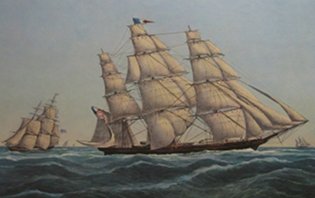Re-posted from a couple of years ago -
(Trout season around 
here opens on in April. Fishing has a lull during the summer, and perks up again in the fall.)
“Fishing Bamboo” is the name of a wonderful book by John Gierach, a veritable fishing curmudgeon of the old school.
In reviewing the book, W. D. Wetherell said, “The split bamboo fly rod and the mystique that goes with it is a subject that deserves just the right mix of skepticism and reverence, and John Gierach is just the writer to supply this, in a fascinating book that explains what the excitement is all about.”
Yet like many wonderful things of the past, the bamboo rod is close to being on the endangered list. I took one of my late father’s wonderful E.C. Powell rods to Montana to fish the Bighorn (hated it – we were trolling downstream from a boat with the fly being swept ahead of us by the current). As I assembled the rod, the 20ish guide said “It just don’t look right, being yellow.” He had never seen a rod that wasn’t molded from green or brown-dyed synthetic petroleum by-products reverently referred to as “graphite”. A professional fishing guide, on the Bighorn, and he had never seen a bamboo rod.
Well, I have to wonder why not, and deal with the conclusions. Those of us who use bamboo are probably using our father’s or grandfather’s rods, because the values of these rods have gone from high to stupid. I lost my mother’s 2½ oz. 7-foot “baby Powell” on a transcontinental flight, and after two years of mourning and being unable even to contemplating fishing, I felt morally obligated to replace it. The 2½ oz. 7-foot Leonard “Fairy Catskill” I found on eBay cost me $3,600, and I fish it often, refusing to be terrified. It’s just Ma’s rod reborn, and it is meant to fish the 7”-9” wild trout we find where I fish in the Sierra Nevada Mountains. The tip, maybe one millimeter thick, is still composed of six long, incredibly slender, patiently-planed pieces of Tonkin cane spliced together, tied with dark red thread and then lacquered. There are precious few people alive today who can replicate or repair such artistry.
Orvis still sells bamboo, and there are still some fabulous rodmakers working today, like my friend Jim in Florida, a retired USAF Master Sergeant, who not only makes amazing bamboo rods, he also make all his own machine tools for the bamboo and also the metal fittings.
Well, where are the rods? I fear they have fallen into the hands of “collectors”, look-but-don’t-touch people with a lot of money and minimal fishing skills – much like Purdey shotguns. Have you ever seen a Purdey in the field in the US where it can get dinged on stone walls, fall in the mud, and run over by SUVs (except for those fancy-ass Hudson Valley corporate clubs).
I have several old bamboo rods and may add one of Jim’s quad rods to my arsenal, and I have some English shotguns, but I follow – and leave the gentle reader with – my partner Tom’s advice. Be sure you can say that you have caught a fish with every rod you own, and that you have taken a bird with every shotgun; only then do you honor the rare skill of the maker.
(Image is an old Heddon 7-8 wt. 9' rod, for big fish - salmon and salt-water fishies. I never thought I'd see it, but salt-water fly-fishing has become all the rage these days.)


